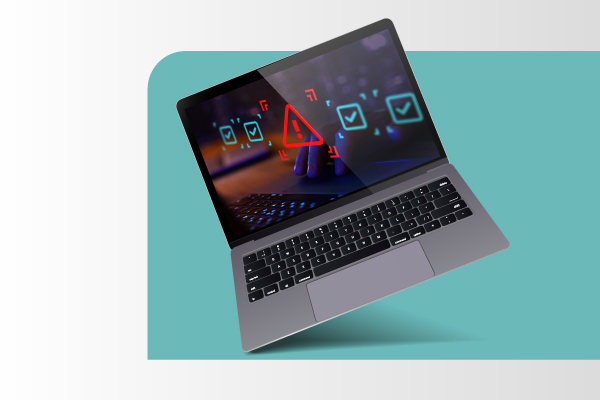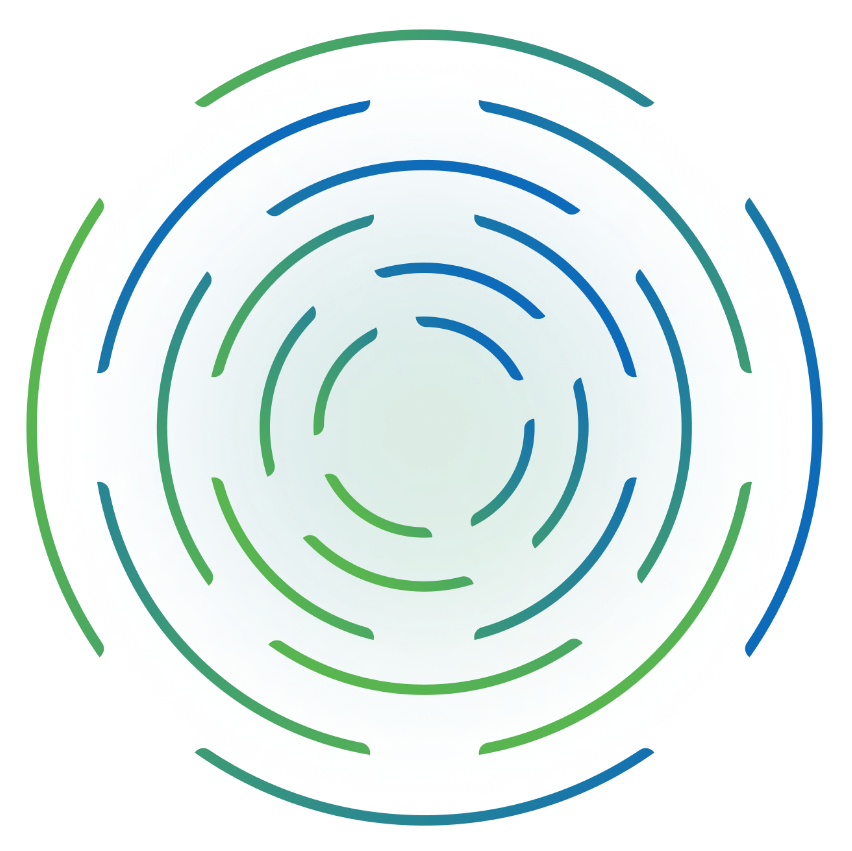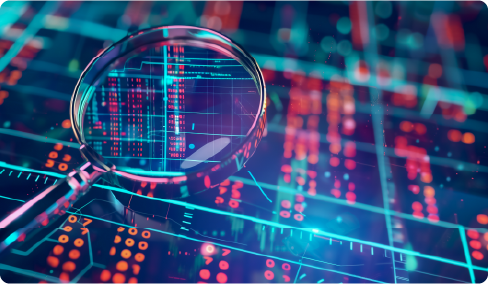As your hybrid cloud footprint becomes more complex, the task of monitoring your IT infrastructure becomes more complicated as well. Hybrid clouds comprise a workload-intensive mix of legacy and modern applications and infrastructure, along with an enormous increase in the volume, variety, and velocity of data to be managed. IT teams charged with monitoring and managing service levels are often stuck with a sprawling collection of disparate monitoring tools. Without a modern approach, your teams will be unable to keep up with spiraling complexity, evolving business needs, and demanding end-user expectations.
The ScienceLogic AI Platform offers a better approach hybrid cloud monitoring. With comprehensive monitoring capabilities on a single platform, ScienceLogic lets you break free from the inefficiencies and obstacles created by legacy point tools to achieve dramatic improvements in speed and agility. By adopting automated operations and artificial intelligence for ITOps (AIOps), you can establish a unified service view across your entire hybrid cloud infrastructure—data center, public cloud (SaaS, IaaS, PaaS) and private cloud.
The challenge of legacy tools for hybrid cloud monitoring
Trying to manage hybrid cloud monitoring with legacy tools is a recipe for frustration and inefficiency. Outdated tools only provide visibility into specific domains or technologies like cloud instances, network equipment, storage systems, or other aspects of your cloud footprint. As a result, your teams can’t access the unified, consistent, contextualized visibility they need to optimize your hybrid ecosystem. Rather than solving operational complexity, legacy tools exacerbate the problem by creating inconsistent workflows, cumbersome integrations, inefficient reporting, and ballooning administrative overhead.
The results aren’t pretty:
- Customer experiences suffer: When root cause analysis and incident resolution are too time-consuming and error-prone, you’re bound to suffer significant downtime, degraded service levels, negative customer experiences, missed SLAs, and lost revenue.
- Costs skyrocket: When managing legacy tools with multiple interfaces, databases, and supporting infrastructure, your teams must spend time and resources overcoming difficult integrations, inconsistent processes, and time-consuming workflows that lead to rising costs.
- Agility fades: The constraints of legacy tools stifle operational agility, limiting the responsiveness of your entire digital business.
CMDBs can’t keep up: With all the IT changes that a hybrid cloud infrastructure mandates, your teams will spend many hours each week reconciling data from multiple sources trying to keep your CMDBs current. - Visibility gaps grow larger: When you work with multiple legacy tools that each do one thing well, you end up with siloed monitoring data. This creates visibility gaps across hybrid cloud environments, making it harder to find the root cause of issues.
- IT teams are surprised by service-impacting issues: Lacking a clear understanding of how infrastructure issues impact business services, IT must too often scramble after the fact to address incidents that degrade the user experience.
To mitigate these adverse impacts, top teams in every industry are moving beyond legacy tools and adopting a modern platform for hybrid cloud monitoring.
Hybrid cloud monitoring with ScienceLogic’s SL1
SL1, part of the ScienceLogic AI Platform delivers hybrid cloud monitoring capabilities that allow you to progressively improve service visibility and automate your IT workflows. Rather than relying on outdated and disjointed tools or a loosely integrated suite of products, your teams can use the SL1 platform to gain a unified approach and establish intelligent, automated operations.
With SL1 you can:
- See everything: SL1 uses multiple techniques—agent, agentless, SNMP, API, SSH, and Syslog—to discover all your devices. From each device, it collects metadata, performance data, configuration details, relationships, and logs. To create an operational data lake, SL1 aligns, merges, aggregates, de-dupes, and normalizes data so you can build your own queries and gain actionable insights.
- Contextualize data: After capturing and preparing data, SL1 simplifies hybrid cloud monitoring by letting you visualize the health, availability, and risk of your business services. By applying machine learning and a rich set of analytical techniques, SL1 cuts through the noise to quickly establish the root cause of issues. Because the platform can sift through massive volumes of data, your team can access a real-time view of constantly changing environments.
- Act proactively and responsively: SL1 cloud infrastructure monitoring tools lets you automate IT workflows and harness contextualized intelligence for proactive and responsive actions. Your teams can easily keep your CMDB up-to-date and accurate, automate ticketing and routing, and streamline troubleshooting and remediation.
Benefits of monitoring with the ScienceLogic AI Platform
By consolidating monitoring tools and filling gaps with full-service visibility, the ScienceLogic AI Platform helps you simplify hybrid cloud monitoring and achieve significant results.
- Avoid service outages. SL1 lets you shift from device-centric monitoring to service-centric monitoring to proactively avoid outages. Understand the business impact of issues by automatically mapping and tracking infrastructure, application, and service dependencies. View service health, availability, and risk in a single real-time dashboard. Drill down to root cause quickly and prioritize work based on business impact.
- Isolate root cause faster. SL1 uses machine learning-based behavioral correlation and anomaly detection to accelerate root cause analysis. With SL1, you can automatically detect weird and anomalous patterns and performance data. Reduce noise, identify service-impacting issues by auto-correlating events, and quickly assess and isolate the root cause of an issue.
- Troubleshoot and fix issues automatically. Rather than wasting time manually diagnosing and fixing issues with a collection of point tools, your ITOps teams can accelerate troubleshooting and repair with a single platform that enables hundreds of best practice automated actions. SL1 automatically captures real-time diagnostic data when events occur and creates and enriches incidents with real-time diagnostic information. Teams can use a single command center to run recommended triage remediation actions, reducing mean time to repair (MTTR).
- Automate operational data workflows. SL1 powers automated workflows for efficiency and agility across operations and LOBs. Automated ticketing helps resolve incidents faster, while a real-time sync of monitored hybrid IT environments helps teams achieve CMDB accuracy. SL1 also lets you automate CI lifecycle, configuration, change, problem, compliance management, and more.
- Extend service visibility. Customized, build-your-own integrations make it easy to integrate and orchestrate people, processes, and systems across your teams. By building your own monitoring solutions via API, SSH/CLI, REST, and JMX, you can extend performance monitoring, synchronization, and automation across new and specialized systems.
Why ScienceLogic?
As a leader in automated IT operations, ScienceLogic provides an AIOps and IT infrastructure monitoring platform that provides ITOps teams with actionable insights to predict and resolve problems faster. By empowering intelligent, automated IT operations, ScienceLogic enables IT teams to free up time and resources, avoid service outages, and drive better outcomes for the business.
The ScienceLogic AI Platform consolidates multiple AIOps and monitoring tools on a single platform, simplifying the task of managing and monitoring complex IT environments. With solutions for AIOps, infrastructure monitoring, network automation, observability, and IT automation, ScienceLogic enables ITOps teams to automate workflows, optimize infrastructure, and ensure the health of business services through digital experience monitoring. ScienceLogic also provides integrated generative AI, automation, and data capabilities to help embrace autonomic IT and continue the journey toward an autonomous business.
Hybrid Cloud Monitoring FAQs
What is a hybrid cloud?
A hybrid cloud is an IT environment that includes a combination of public cloud services, private cloud resources, and on-premises infrastructure.
What is hybrid cloud monitoring?
Hybrid cloud monitoring is the task of monitoring and managing the infrastructure within hybrid clouds to ensure optimal performance, availability, and security.
What are the benefits of hybrid cloud monitoring?
By monitoring hybrid cloud resources, IT operations teams can prevent outages, optimize performance, enhance security, and optimize costs to ensure that customers and users have access to the business services they need.








